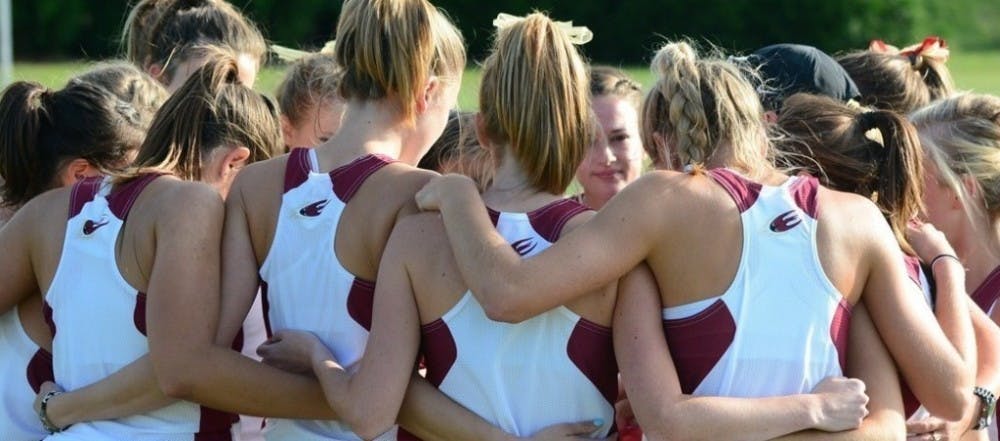The Elon University women’s cross country team had its best season in program history last year with a ninth place finish at the NCAA Southeast Regional Championships, its highest ever.
The team is looking to improve on that ranking and make an immediate impact in the Colonial Athletic Association. One challenge these runners face is new competition without last year’s top runner, Allyson Oram.
“I think it’s more exciting because you’re going into something, and you have to prove yourself,” said senior captain Haylee Dawe. “No one is putting an expectation on you. You are coming and surprising people.”
A lone runner taking the lead isn’t going to meet that challenge for the women’s team this year.
“We don’t want to replace one. We want to move our whole pack up a little bit,” Dawe said.
According to head coach Nick Polk, on paper there isn’t a clear No. 1 runner, and the workouts will show who rises to the top, but the pack has to be strong as a whole.
“It’s going to be some of the older girls mixed in with the freshmen to create a higher-level requirement this year,” Polk said. “Leading some of those freshmen into the front pack, that’s how we’re going to do damage the first year in the CAA.”
The runners know they can’t just show up and expect somebody else to step up. With most of the top eight runners returning this season, they have to compete together.
“You can’t hope one runner is going to fill that spot,” said sophomore Kimberly Johansen. “As a team, we have to focus on being there together and being as close as possible because that’s more important than having one person out in first place.”
Going through training and racing in practices, it’s important to learn who does what well.
“Everybody’s mileage might be different,” Johansen said. “You can read what they would do in a race and learn how everyone else will perform.”
What drives Johansen forward is seeing her teammates’ jerseys in front of her and knowing they’ve gotten through the race together.
“When you’re running you have to have that bit of ‘they’re doing this, this is what I have to do,’” Johansen said. “You have to hold yourself accountable because you know your teammates are expecting certain things.”
There are few races throughout the season — only 10 meets on the schedule — and the runners said they want to have good performances at each of them, but they don’t have to run their best until competition.
“We’ve always had mindset that conference and regionals are what matter most,” Dawe said. “The whole time we’re thinking about those meets. That’s when you have to prove that you deserved those rankings.”
For runners like Johansen, the thrill of running a 6k and the success both of the individual and the team, is what makes the miles worth it.
“You only have so many opportunities to see it all come together,” Johansen said. “When you do, you are so much more happy with it because of all the physical work. We know each other on such a personal, deep level, that you know you weren’t randomly placed and just ended up having a good race. There’s so much more there.”
Despite the many changes this team has been through, the culture and drive that enables each runner to go the extra mile remains the same.
“As a program we fuel off of each other,” Dawe said. “And our success comes off of our relationship with each other which hasn’t changed.”


